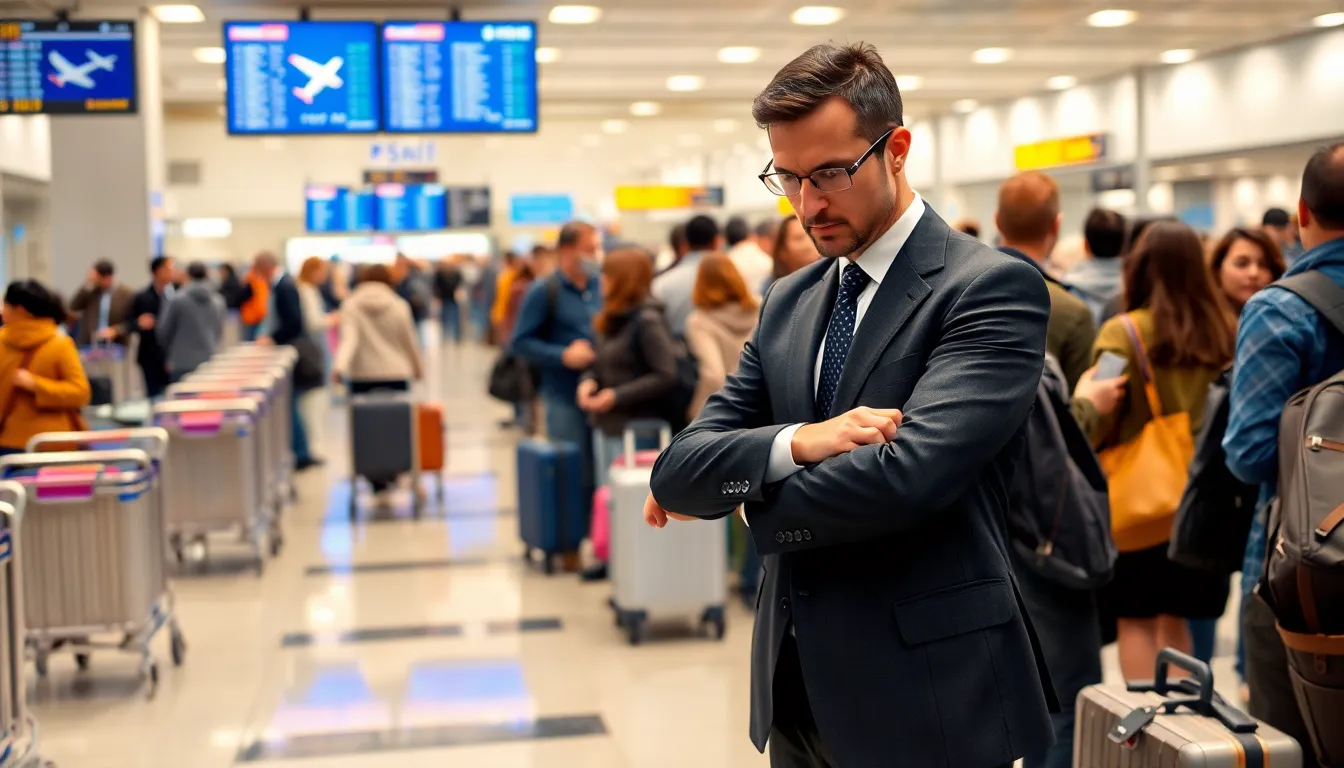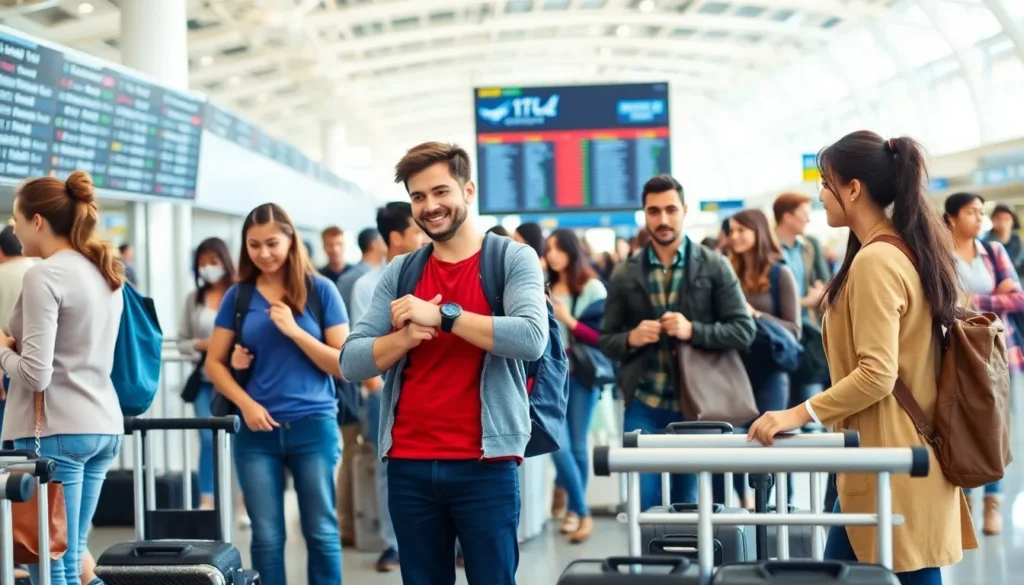Table of Contents
TogglePlanning an international flight? It’s not just about packing your bags and hoping for the best. Knowing how many hours to arrive before takeoff can save travelers from the chaos of missed flights and airport meltdowns. Imagine sprinting through the terminal like a contestant on a game show—it’s not a fun way to start a vacation!
Understanding International Flight Check-In Times
Planning ahead for international flights includes knowing check-in times. Arriving early significantly reduces stress and ensures a smoother travel experience.
Importance of Arriving Early
Being early for international flights creates opportunities for passengers. It allows enough time for security screenings, which can be lengthy. Passengers avoid rushing, ensuring they make their flight without anxieties. Arriving two to three hours ahead of departure supports a calm environment. Many airlines recommend this time frame to accommodate unexpected delays. Travelers find that settling in before boarding enhances overall enjoyment.
Factors Influencing Check-In Requirements
Several factors determine specific check-in requirements for international flights. Airline policies often dictate preferences for check-in times. Destination countries impose entry regulations affecting arrival times. This includes customs procedures, which may take additional time. Group travel often requires coordinated efforts, making early arrival crucial. Seasonal travel, such as holidays, can increase passenger volume, extending check-in times. Travelers should consider these aspects when planning their arrival at the airport.
General Guidelines for Arrival Times

Arriving early at the airport for an international flight minimizes stress and enhances the travel experience. Various factors influence the recommended arrival time.
Economy Class vs. First Class
Economy class passengers typically face longer check-in lines and security waits. Therefore, arriving three hours before departure is advisable for these travelers. First class travelers often enjoy expedited check-in and security processes. As a result, they can arrive two hours prior and still manage a relaxed pre-flight experience. Understandably, airline policies vary, so checking with the specific airline may prove useful.
Domestic Connections vs. International Flights
Domestic connections usually allow for shorter arrival times compared to international flights. Arriving two hours before a domestic flight often suffices, whereas international flights require at least three hours. Customs and immigration procedures can extend wait times for international travel, emphasizing the need for early arrival. Travelers with connections may need to consider layover times as well. Longer layovers permit flexibility, while tighter schedules necessitate timely arrival.
Recommended Timeframes
Travelers must arrive at the airport early for international flights to ensure a smooth experience. Proper timing is crucial for managing security and check-in processes.
Minimum Recommended Hours
Arriving three hours before an international flight serves as the general guideline for economy class passengers. Airports often see longer check-in lines and security waits, making this timeframe essential. First class travelers can typically arrive two hours prior, benefiting from expedited check-in processes. Customs and immigration procedures can add extra time, so planning for potential delays accommodates these factors.
Optimal Arrival Times for Stress-Free Travel
For stress-free travel, arriving at least three hours ahead supports preparation for unexpected delays. Consideration for various factors enhances the travel experience. During peak travel seasons, even more time may be necessary to navigate busier airport environments. It’s advisable for travelers with connections to plan additional time based on layover durations. This creates a buffer that adjusts for potential hold-ups in the process.
Special Considerations
Travelers should account for specific circumstances when planning airport arrival times for international flights. These factors can influence the overall travel experience.
Travel with Children or Pets
Traveling with children or pets requires extra preparation. Make arrangements in advance to ensure a smooth journey. Expect longer check-in times due to additional documentation and security procedures. Parents may need to manage strollers, diaper bags, and entertainment for children during waiting periods. For pet owners, vaccination records and travel carriers must be readily accessible. Arriving at least three hours before departure can alleviate stress and provide enough time for necessary checks.
Dealing with Customs and Security Checks
Customs and security checks may prolong wait times for international flights. Expect lines to vary based on the time of day and current travel volume. Passengers should familiarize themselves with country-specific regulations and necessary documentation beforehand. Keeping essential items like passports and visas easily accessible speeds up the process. Expect to undergo security screenings that can involve additional checks, especially during peak travel seasons. Arriving early reduces anxiety and creates a more pleasant travel experience.
Proper planning for international flights is essential for a smooth travel experience. Arriving at the airport three hours before departure allows ample time for check-in and security procedures. This approach not only minimizes stress but also ensures travelers can navigate potential delays with ease.
Understanding the various factors that influence arrival times can further enhance the journey. Whether traveling alone or with family, being proactive about airport logistics sets the stage for an enjoyable adventure. Ultimately, prioritizing early arrival transforms the travel experience into one that’s relaxed and enjoyable.





